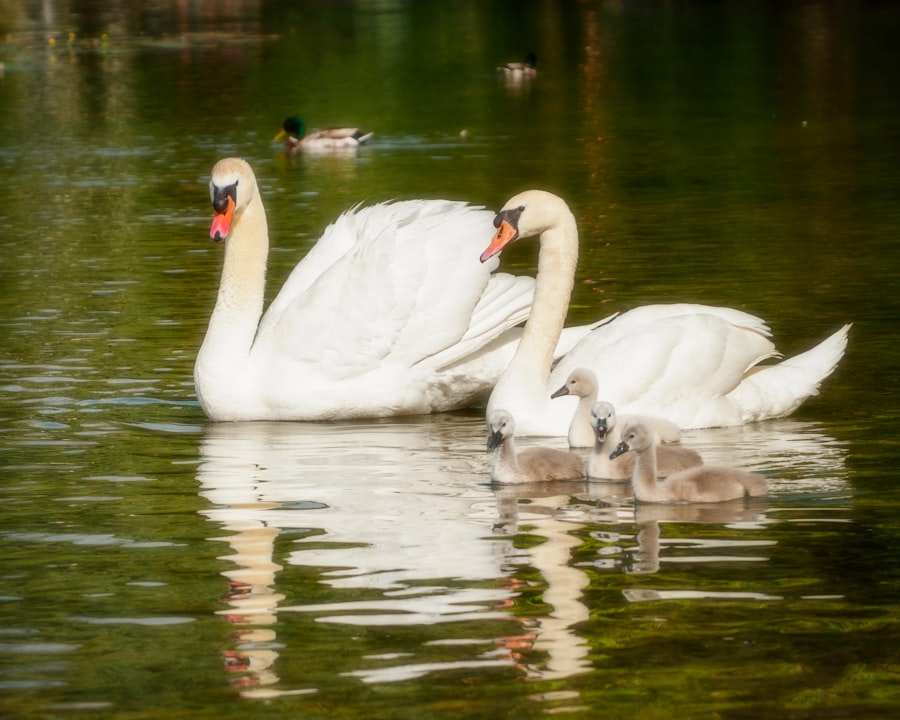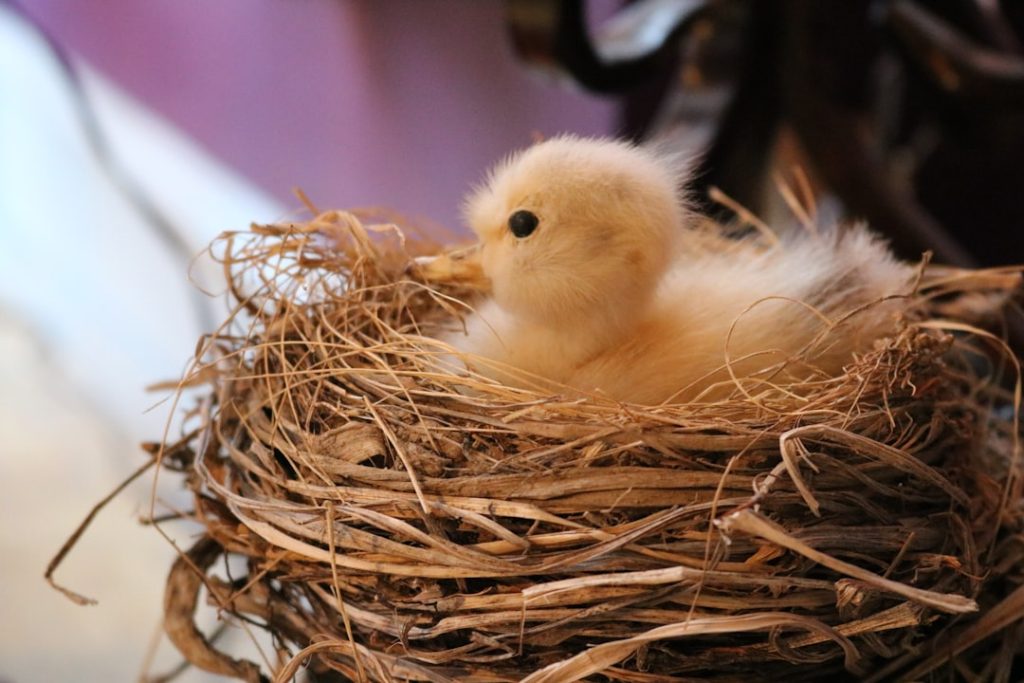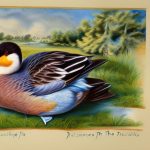Ducks are known for their charming and endearing nature, and small duck breeds are especially popular among poultry enthusiasts. These pint-sized ducks are not only adorable, but they also make great pets and are relatively easy to care for. Small duck breeds are perfect for those with limited space, as they require less room than larger duck breeds. In addition, their small size makes them easier to handle and manage, making them a great choice for families with children. Whether you’re a beginner or an experienced duck owner, small duck breeds are a delightful addition to any flock.
Table of Contents
Key Takeaways
- Small duck breeds are a popular choice for backyard poultry enthusiasts due to their compact size and charming personalities.
- Small duck breeds are known for their friendly and sociable nature, making them great pets for families and individuals alike.
- Popular small duck breeds include the Call Duck, East Indie, and Dutch Hookbill, each with their own unique characteristics and traits.
- When caring for small duck breeds, it’s important to provide them with a secure and spacious housing environment, as well as a balanced diet and regular access to water for swimming and grooming.
- Breeding and reproduction of small duck breeds require careful attention to nesting and brooding conditions, as well as monitoring the health and well-being of both the parent ducks and their offspring.
Characteristics of Small Duck Breeds
Small duck breeds are known for their petite size, with most weighing between 2-4 pounds. They come in a variety of colors and patterns, adding to their visual appeal. Despite their small stature, these ducks are hardy and resilient, able to thrive in a range of climates. They are also known for their friendly and sociable nature, making them great companions for both humans and other ducks. Small duck breeds are generally good layers, producing a respectable number of eggs for their size. Their small size also means they require less feed and space, making them a cost-effective choice for those with limited resources.
In terms of temperament, small duck breeds are known for being docile and easy to handle. They are generally less aggressive than larger duck breeds, making them a great choice for families with children. Small duck breeds are also known for their adaptability, able to thrive in a variety of living situations. Whether you have a small backyard or a larger farm, these ducks will fit right in. Their small size also makes them easier to transport, whether for shows or relocation. Overall, small duck breeds are a delightful addition to any flock, bringing charm and personality to any setting.
Popular Small Duck Breeds
There are several popular small duck breeds that are favored by poultry enthusiasts for their unique characteristics and charming personalities. The Call Duck is one of the most well-known small duck breeds, prized for its petite size and wide range of colors. Call Ducks are known for their distinctive “quack” and are often kept as pets or for exhibition purposes. Another popular small duck breed is the East Indies Duck, which is known for its striking coloration and friendly disposition. East Indies Ducks are excellent foragers and make great additions to backyard flocks.
The Dutch Hookbill is another popular small duck breed, known for its unique bill shape and friendly nature. These ducks are excellent layers and make great pets due to their calm temperament. The Silver Appleyard is a small duck breed that is prized for its beautiful plumage and excellent egg-laying abilities. These ducks are known for their friendly nature and adaptability to various living conditions. Lastly, the Miniature Crested Duck is a small breed that is prized for its distinctive crest and friendly personality. These ducks are excellent layers and make great pets due to their charming appearance and docile nature.
Care and Housing for Small Duck Breeds
When it comes to caring for small duck breeds, there are a few key considerations to keep in mind. First and foremost, it’s important to provide adequate housing that offers protection from predators and the elements. A secure coop or shelter is essential for keeping small duck breeds safe and comfortable. Additionally, providing access to clean water for swimming and drinking is crucial for the health and well-being of these ducks. Small duck breeds also require a balanced diet that includes a mix of commercial feed, fresh greens, and occasional treats.
In terms of healthcare, regular check-ups with a poultry veterinarian are recommended to ensure the overall health of small duck breeds. It’s important to monitor for signs of illness or injury and seek prompt veterinary care when needed. Additionally, providing regular access to clean water and maintaining a clean living environment can help prevent common health issues in small duck breeds. Overall, providing attentive care and a suitable living environment is essential for the well-being of small duck breeds.
Breeding and Reproduction of Small Duck Breeds
Breeding small duck breeds can be a rewarding experience for poultry enthusiasts looking to expand their flock or produce offspring for exhibition purposes. When breeding small duck breeds, it’s important to select healthy, well-matched breeding pairs to ensure the production of strong and robust offspring. Providing a suitable nesting area with access to clean bedding materials is essential for successful breeding and reproduction. Additionally, providing a balanced diet that includes essential nutrients is crucial for the health and fertility of breeding ducks.
In terms of reproduction, small duck breeds typically lay a respectable number of eggs throughout the breeding season. It’s important to provide nesting boxes or suitable nesting areas to encourage natural nesting behaviors in breeding ducks. Once the eggs are laid, it’s important to provide proper incubation conditions or allow the mother duck to brood the eggs naturally. Providing attentive care and monitoring the progress of the breeding process can help ensure successful reproduction in small duck breeds.
Common Health Issues in Small Duck Breeds

While small duck breeds are generally hardy and resilient, they can be prone to certain health issues that require attention and care. One common health issue in small duck breeds is respiratory infections, which can be caused by poor ventilation or exposure to damp conditions. Providing a clean living environment with adequate ventilation can help prevent respiratory issues in small duck breeds. Another common health issue is bumblefoot, which is characterized by swelling and infection in the feet of ducks. Providing clean bedding materials and regular foot checks can help prevent bumblefoot in small duck breeds.
Parasites such as mites and lice can also pose a health risk to small duck breeds, causing irritation and discomfort. Regular inspections and treatment with appropriate parasite control products can help prevent infestations in small duck breeds. Additionally, providing access to clean water for swimming and drinking is crucial for preventing skin and feather issues in small duck breeds. Overall, providing attentive care and monitoring for signs of illness or discomfort can help prevent common health issues in small duck breeds.
The Appeal of Small Duck Breeds
In conclusion, small duck breeds are a delightful addition to any flock, bringing charm and personality to any setting. Their petite size, friendly nature, and adaptability make them an appealing choice for poultry enthusiasts of all experience levels. Whether kept as pets or for exhibition purposes, small duck breeds offer unique characteristics that make them stand out among other poultry species. With proper care and attention to their specific needs, small duck breeds can thrive and bring joy to their owners for years to come. Whether you’re looking to expand your flock or simply enjoy the company of these charming ducks, small duck breeds are sure to capture your heart with their endearing nature and delightful presence.
If you’re interested in learning more about small duck breeds, you might also want to check out this article on how many eggs geese lay. Understanding the egg-laying habits of geese can provide valuable insights into the breeding and care of waterfowl, which can be beneficial for poultry enthusiasts looking to diversify their flock.
FAQs
What are the smallest duck breeds?
The smallest duck breeds include the Call Duck, the Mandarin Duck, and the Baikal Teal.
How small are the smallest duck breeds?
The smallest duck breeds typically weigh between 1-2 pounds and are about 12-15 inches in length.
What are the characteristics of the smallest duck breeds?
The smallest duck breeds are known for their compact size, short bills, and vibrant plumage. They are often kept as pets or for ornamental purposes.
What are the common uses of the smallest duck breeds?
The smallest duck breeds are commonly kept as pets, for exhibition purposes, and for their ornamental value in ponds and gardens.
Are the smallest duck breeds good for beginners as pets?
Yes, the smallest duck breeds are often recommended for beginners as they are easy to care for and can adapt well to various living environments.
Meet Walter, the feathered-friend fanatic of Florida! Nestled in the sunshine state, Walter struts through life with his feathered companions, clucking his way to happiness. With a coop that’s fancier than a five-star hotel, he’s the Don Juan of the chicken world. When he’s not teaching his hens to do the cha-cha, you’ll find him in a heated debate with his prized rooster, Sir Clucks-a-Lot. Walter’s poultry passion is no yolk; he’s the sunny-side-up guy you never knew you needed in your flock of friends!







